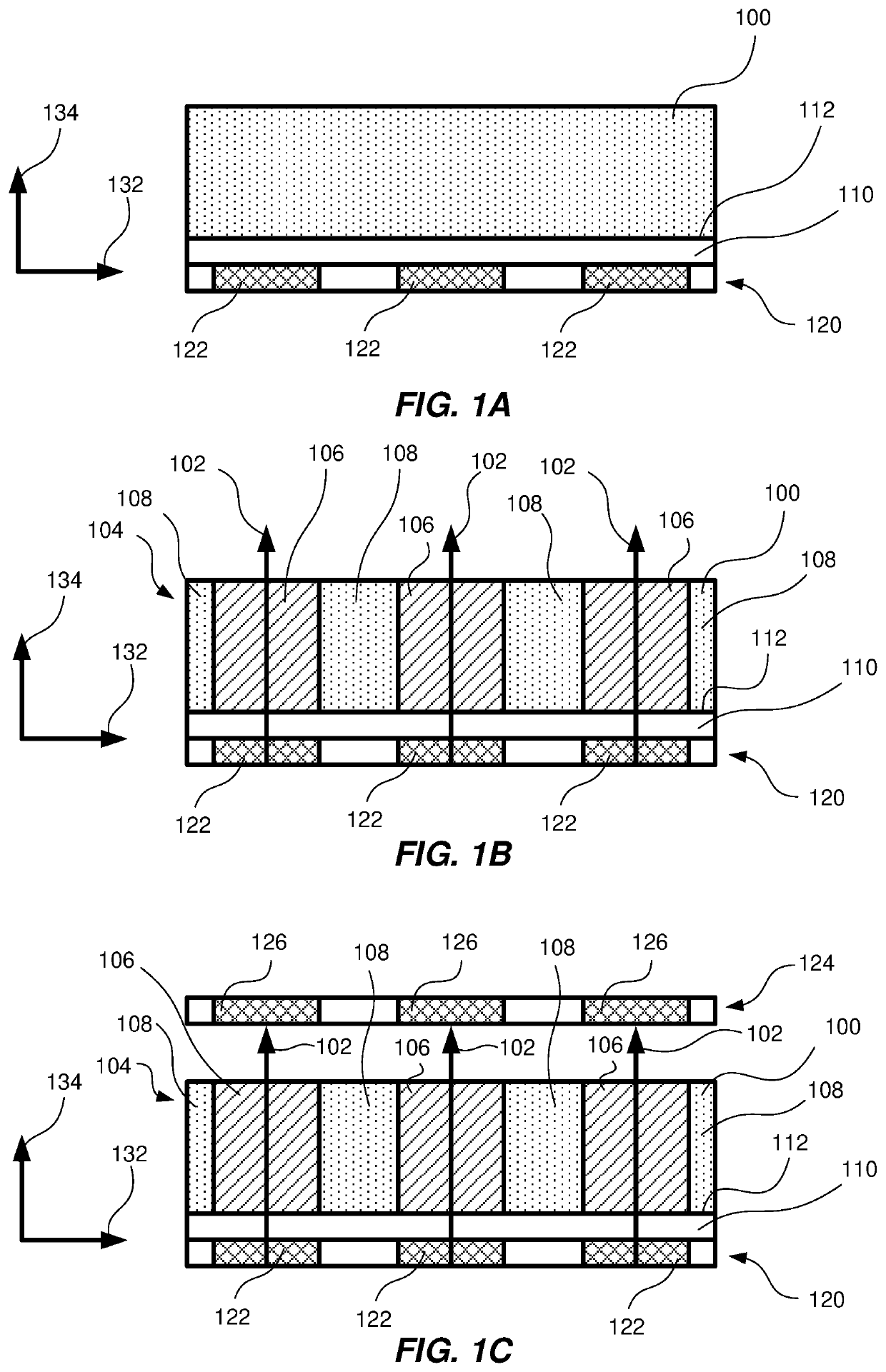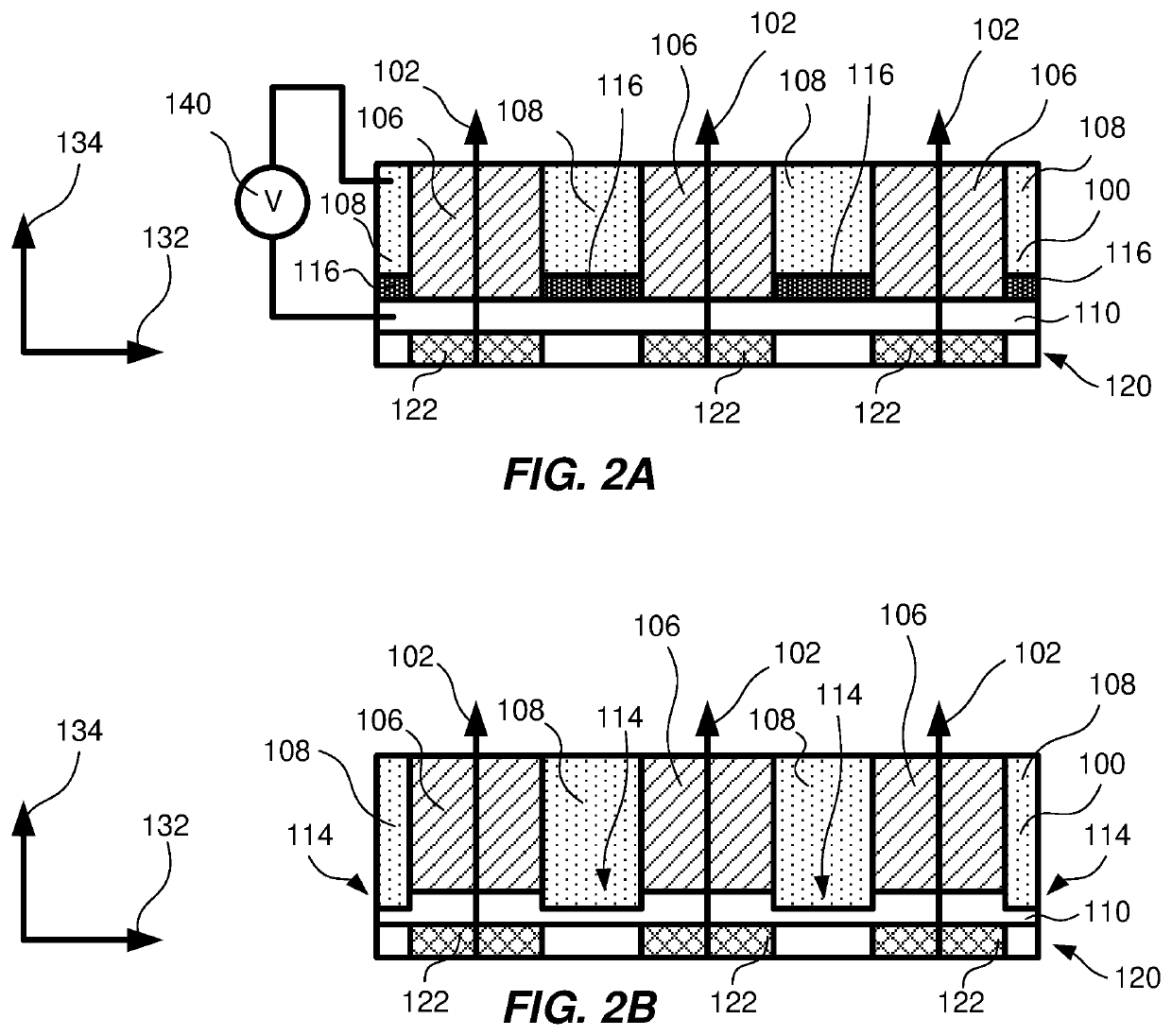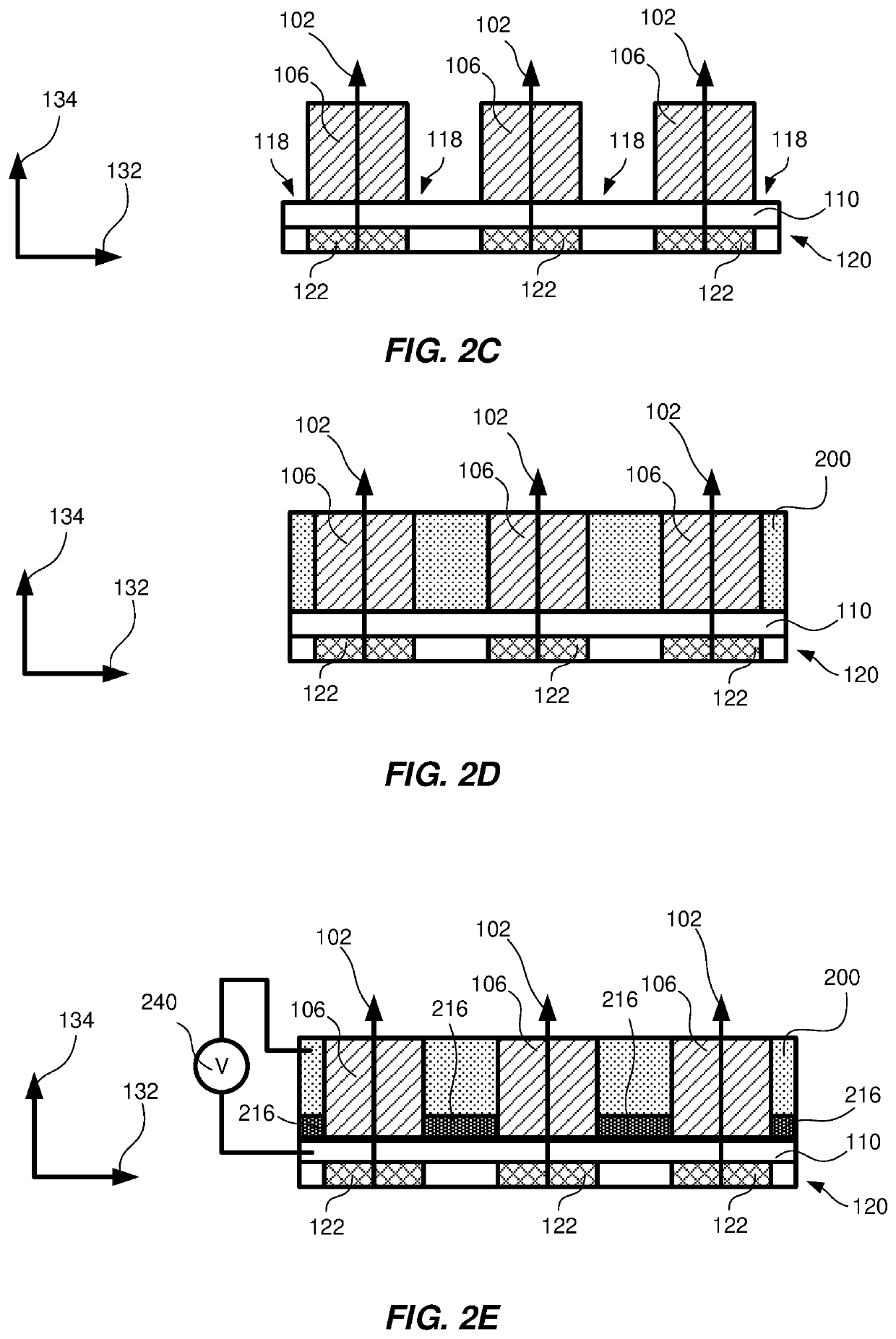Method for patterning a surface of a substrate
- Summary
- Abstract
- Description
- Claims
- Application Information
AI Technical Summary
Benefits of technology
Problems solved by technology
Method used
Image
Examples
example 1
ckening Magnetorheological Liquid
[0113]All concentrations (volumetric, molar, wt. %, etc.) given in this example are in relation to the complete (i.e. comprising all constituents) liquid. The liquid may be diluted with water in order to achieve the desired concentrations.
[0114]In this first example, a shear-thickening magnetorheological liquid is used in a process where metallic nickel is deposited on a non-conducting plastic substrate. The surface of the plastic substrate was pretreated (e.g., by plasma or corona treatment) such that it can be plated. The shear-thickening additive of the magnetorheological liquid in this example is hexadecyltrimethylammonium bromide at a concentration of 0.3 M and p-toluene sulfonate at a concentration of 0.5 M in water. The magnetic additive of the magnetorheological liquid in this example is silica-coated iron microparticles at a concentration of 15 wt. % and silica-coated disordered chromium nanoparticles at a concentration of 20 wt. %. Ammonia ...
example 2
nning Magnetorheological Liquid
[0118]All concentrations (volumetric, molar, wt. %, etc.) given in this example are in relation to the complete (i.e. comprising all constituents) liquid. The liquid may be diluted with water in order to achieve the desired concentrations.
[0119]In this second example, a shear-thinning magnetorheological liquid is used in a process where CdTe films are deposited on a conducting aluminum foil. The shear-thinning additive of the magnetorheological liquid in this example is xanthan gum powder at a concentration of 5 gram per liter. The magnetic additive of the magnetorheological liquid in this example is silica-coated iron microparticles at a concentration of 1 wt. % and silica-coated disordered chromium nanoparticles at a concentration of 5 wt. %.
[0120]The concentrations given above are to be seen as examples only, it has been found that they may be varied. For example, in the shear-thinning magnetorheological liquid, the concentration of xanthan gum powd...
example 3
ckening Electrorheological Liquid
[0123]All concentrations, unless explicitly stated otherwise, (volumetric, molar, wt. %, etc.) given in this example are in relation to the complete (i.e. comprising all constituents) liquid. The liquid may be diluted with silicone oil in order to achieve the desired concentrations.
[0124]In this third example, a shear-thickening electrorheological liquid is used in a process where Mo is etched from a Mo-coated silicon wafer.
[0125]The shear-thickening additive of the electrorheological liquid in this example is silica nanoparticles at a concentration of 10 wt. % in silicone oil, whereby wt. % here is with respect to the silicone oil. The electrorheological additive of the electrorheological liquid in this example is barium titanyl oxalate [BaTiO(C2O4)2] nanoparticles (concentration of 20 volumetric %) coated with urea.
[0126]The concentrations given above are to be seen as examples only, it has been found that they may be varied. For example, in the sh...
PUM
 Login to View More
Login to View More Abstract
Description
Claims
Application Information
 Login to View More
Login to View More - R&D
- Intellectual Property
- Life Sciences
- Materials
- Tech Scout
- Unparalleled Data Quality
- Higher Quality Content
- 60% Fewer Hallucinations
Browse by: Latest US Patents, China's latest patents, Technical Efficacy Thesaurus, Application Domain, Technology Topic, Popular Technical Reports.
© 2025 PatSnap. All rights reserved.Legal|Privacy policy|Modern Slavery Act Transparency Statement|Sitemap|About US| Contact US: help@patsnap.com



